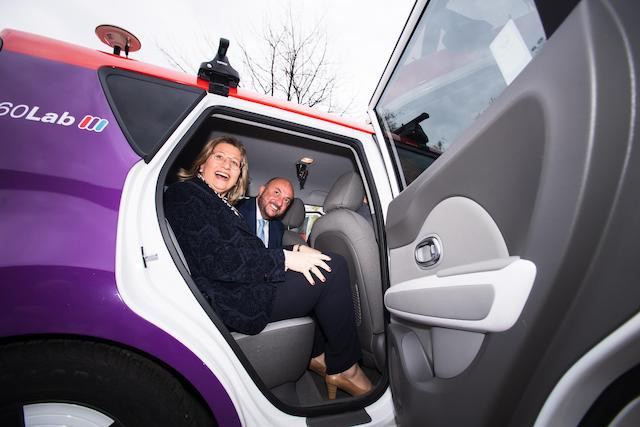During the event, five ministers boarded three cars to do a quick loop through the three countries in which the testbed is located: Germany, France and Luxembourg.
The testbed, which involves a 206km circuit between Schengen, Saarbrücken and Metz, will allow for a wide range of digital technologies to be tested for autonomous driving under real-life conditions.
This tech includes the possibility for such vehicles to pick up on data from the environment, road and weather conditions, and interact with the infrastructure and even each other, but such tech speed and reliability requires 5G.
That’s where 5GCroCo (which stands for 5G Crossborder Control) comes in. 5GCroCo, a project with a total budget of €17m, will trial 5G technology on the testbed. It is backed by 24 partners from seven European countries, including top industry and telecom companies such as Post at the head, Volvo, Renault, Volkswagen, Bosch, Deutsche Telekom and Huawei.
5G tech is 10 times more rapid than 4G.

Photo: Nader Ghavami
Vision of future mobility
As Delano’s sister site, Paperjam, reported, minister of the economy Etienne Schneider emphasised how the radical shift in mobility will lead not only to energy efficiency and better air quality, but also safety.
Minister of transport François Bausch described a mobility-as-a-service vision, in which people no longer own vehicles but seek mobility solutions in a new way. He added that there would be a transition phase but ultimately, “We need, at the European level, to push for this equipment to be installed by default in vehicles. Some projects will start, such as autonomous shuttles or taxis.”
Schengen was chosen for the launch because of its position at the borders of Luxembourg, France and Germany, not to mention its historical context as the location of the signing of the agreement that provided the foundation for today’s free movement of goods and people throughout the Schengen zone.
Organisations such as the University of Luxembourg’s SnT, Liser, Luxinnovation and IEE were also present at the event to share their pragmatic experiences.
